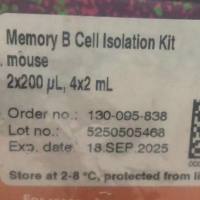Effects of Selective Immunotoxic Lesions on Learning and Memory
互联网
互联网
相关产品推荐

Recombinant-Rat-Endothelin-B-receptorEdnrbEndothelin B receptor; ET-B; ET-BR Alternative name(s): Endothelin receptor non-selective type
¥12474

美天旎Miltenyi货号130-095-838小鼠记忆B细胞分离试剂盒(Memory B Cell Isolation Kit,mouse)上海睿安生物13611631389
¥11380.23

Recombinant-Dog-Endothelin-B-receptorEDNRBEndothelin B receptor; ET-B; ET-BR Alternative name(s): Endothelin receptor non-selective type
¥12474

Recombinant-Mouse-Endothelin-B-receptorEdnrbEndothelin B receptor; ET-B; ET-BR Alternative name(s): Endothelin receptor non-selective type
¥12474

Recombinant-Horse-Endothelin-B-receptorEDNRBEndothelin B receptor; ET-B; ET-BR Alternative name(s): Endothelin receptor non-selective type
¥12488

